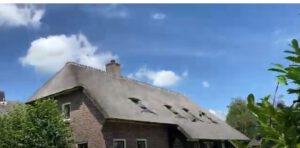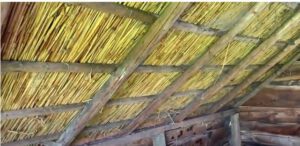 Thatched roofs have been used for centuries and are known for their rustic charm and natural appeal. In Australia, where the climate can vary significantly across different regions, thatched roofs present both advantages and disadvantages. This article will delve into the various aspects of thatched roofs in Australia, exploring their benefits and limitations in detail.
Thatched roofs have been used for centuries and are known for their rustic charm and natural appeal. In Australia, where the climate can vary significantly across different regions, thatched roofs present both advantages and disadvantages. This article will delve into the various aspects of thatched roofs in Australia, exploring their benefits and limitations in detail.
Advantages of Thatched Roofs in Australia
- Aesthetic Appeal: Thatched roofs have a unique and timeless beauty that adds character to any structure. In Australia, where many homeowners appreciate a rustic or traditional look, thatched roofs can create a visually striking and harmonious aesthetic. The use of natural materials also blends well with the country’s diverse landscapes.
- Insulation: One of the notable advantages of thatched roofs is their exceptional insulation properties. Thatch acts as a natural insulator, keeping the interior of a building cooler in hot Australian summers and warmer during colder winters. This insulation ability reduces the need for excessive heating or cooling, resulting in energy savings and increased comfort for the occupants.
- Environmental Sustainability: In an era of increased environmental awareness, thatched roofs offer an eco-friendly alternative. The materials used in thatching, such as straw or reed, are renewable and biodegradable, making them a sustainable roofing option. Additionally, thatched roofs require minimal energy and resources during construction, contributing to a smaller carbon footprint compared to conventional roofing materials.
- Sound Absorption: Thatched roofs possess excellent sound-absorbing qualities due to the thickness and density of the thatch material. In areas with high noise levels, such as busy streets or near airports, a thatched roof can help create a more peaceful and tranquil living environment.
- Durability: Contrary to popular belief, well-maintained thatched roofs can have a decent lifespan, especially in regions with a mild climate. With proper installation techniques and regular maintenance, including rethatching and treatment against pests, a thatched roof in Australia can last between 30 and 50 years.
Disadvantages of Thatched Roofs in Australia:
Fire Hazard: One of the most significant concerns associated with thatched roofs is their susceptibility to fire. Thatch is highly combustible, and in areas prone to bushfires or with strict fire safety regulations, the use of thatch may be restricted or require additional fireproofing measures. Homeowners must take precautions, such as installing fire-resistant barriers or using fire-retardant treatments, to minimize the fire risk.
Maintenance Requirements: Thatched roofs demand regular maintenance to ensure their longevity and structural integrity. The roof requires periodic inspections, repairs, and rethatching as the thatch material naturally decays over time. Maintenance can be labor-intensive and expensive, as it involves skilled craftsmen and the sourcing of quality thatch materials.
Pests and Vermin: Thatched roofs can attract pests such as rodents, birds, or insects. Small animals may burrow into the thatch, causing damage, while birds can nest within the roof structure. These unwanted guests can lead to structural issues, infestations, and potential health hazards. Vigilant pest control measures, such as installing wire mesh or implementing bird deterrents, are necessary to prevent such problems.
Limited Availability of Skilled Craftsmen: In Australia, finding skilled thatchers who possess the necessary expertise and experience can be challenging. Thatching is a specialized trade, and the scarcity of professionals can result in higher costs and longer waiting times for installation and repairs. This limitation can pose a significant inconvenience for homeowners considering a thatched roof.
Insurance and Mortgage Considerations: Thatched roofs may present obstacles when it comes to obtaining insurance coverage or securing a mortgage. Some insurance providers may view thatched roofs as higher risk due to their fire hazard potential. Likewise, certain lenders may have specific requirements or restrictions regarding the use of thatch as a roofing material, potentially limiting financing options.
Conclusion
 Thatched roofs offer several advantages in the Australian context, including aesthetic appeal, insulation, environmental sustainability, sound absorption, and durability. However, it is important to consider the disadvantages, such as fire hazard, maintenance requirements, pest and vermin issues, limited availability of skilled craftsmen, and potential insurance and mortgage considerations. Homeowners interested in installing a thatched roof should carefully weigh the pros and cons, consider local regulations, and consult with experts to make an informed decision about this unique and captivating roofing option.
Thatched roofs offer several advantages in the Australian context, including aesthetic appeal, insulation, environmental sustainability, sound absorption, and durability. However, it is important to consider the disadvantages, such as fire hazard, maintenance requirements, pest and vermin issues, limited availability of skilled craftsmen, and potential insurance and mortgage considerations. Homeowners interested in installing a thatched roof should carefully weigh the pros and cons, consider local regulations, and consult with experts to make an informed decision about this unique and captivating roofing option.